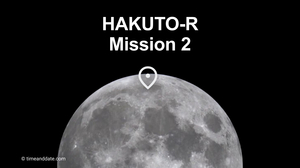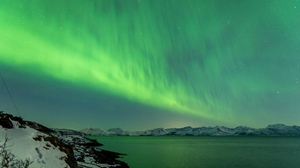
Next Moon Landing: Where Is Mare Frigoris?
HAKUTO-R Mission 2 is scheduled to land in Mare Frigoris—the Sea of Cold—on June 6. Why was this landing site chosen?
Easter Sunday is one of the most joyful and significant celebrations for Christians worldwide. It commemorates Jesus Christ’s resurrection from death, as written in the Christian Bible.

Sunrise gatherings on Easter Sunday reflect themes of renewal, hope, and community across many cultures.
©iStockphoto.com/Lian Baumann
According to Christian belief, Easter Sunday marks the day Jesus Christ rose from the dead, two days after his crucifixion on Good Friday.
His resurrection offers hope and promises eternal life, which is why Easter is a day of joy, hope, and celebration. Many see it as the most important event in the Christian faith.
Although Easter is deeply rooted in religious tradition, people around the world celebrate it in many different ways. They often mix church traditions with local customs to make the holiday their own.
Christians across the world mark Easter Sunday in special ways. Common traditions include:
In Spain, particularly in cities like Seville, Málaga, and Granada, Easter is the culmination of Semana Santa (Holy Week), which includes elaborate processions featuring religious floats, penitents, and marching bands.
Over in the Philippines, a predominantly Catholic nation, Easter begins with a pre-dawn ritual called Salubong. During this event, statues of the Risen Christ and the Virgin Mary are reunited in a profound and moving procession that symbolizes the joy of the Resurrection. This is followed by a church service and a big family meal.
Easter traditions in Poland are rich in symbolism and communal spirit. On Holy Saturday, families prepare baskets of food—including eggs, bread, and sausage, as well as sweet treats like babka—and take them to be blessed at church. These foods are then enjoyed the next day during a festive Easter breakfast.
Although Easter maintains great religious significance, many children in countries around the world also look forward to wearing new spring clothes, decorating eggs, and participating in Easter egg hunts—often with visits from the Easter Bunny.
Eggs, lamb, and Jollof: Easter food traditions around the world
This is because Easter must fall after Jewish Passover to preserve the biblical sequence of events. As a result, Orthodox Easter is usually celebrated later than Western Easter.
Easter is full of symbols that represent new life, hope, and renewal. Many of them come from both Christian and older springtime traditions.
Easter Sunday is widely observed in many predominantly Christian countries, including:
While not always a designated public holiday, it often results in widespread closures of government offices, schools, and businesses due to its religious significance and the fact that it falls on a Sunday.
In countries where Sunday is a non-working day, public transportation may be limited or run on a different schedule. If you’re planning to use public transport, you may need to check the schedules ahead of time.
Easter does not fall on the same date each year. Instead, it is based on a mix of lunar cycles and church tradition.
In the year 325 CE, Christian Bishops at the First Council of Nicaea decided that Easter would be celebrated on the first Sunday following the Paschal Full Moon—the first Full Moon occurring on or after March 21. If that Full Moon falls on a Sunday, Easter is observed the following week.
Even though Easter is linked to the spring equinox and the Full Moon, the Church does not rely on the actual astronomical events to set the date. Instead, it uses a set of mathematical rules. For example, March 21 is always treated as the equinox, even though it can occur between March 19 and 22, depending on the year.
The date of the Paschal Full Moon is based on the Metonic cycle—a 19-year period that helps align lunar months with the solar year. Occasionally, the Church’s calculated Full Moon matches the astronomical one, but often, the two differ.
Eastern Orthodox churches, by contrast, continue to use the Julian calendar instead of the modern Gregorian calendar to determine their Easter date.

HAKUTO-R Mission 2 is scheduled to land in Mare Frigoris—the Sea of Cold—on June 6. Why was this landing site chosen?

Right now, a huge solar flare and an Earth-directed coronal mass ejection mean brighter auroras further away from the poles.

What’s up in the day and night sky in June 2025: A bright morning Venus, two Moon-Mars conjunctions, and the solstice changing the seasons.

Discover the phases of the Moon in June 2025, including close approaches with Mars and Venus.